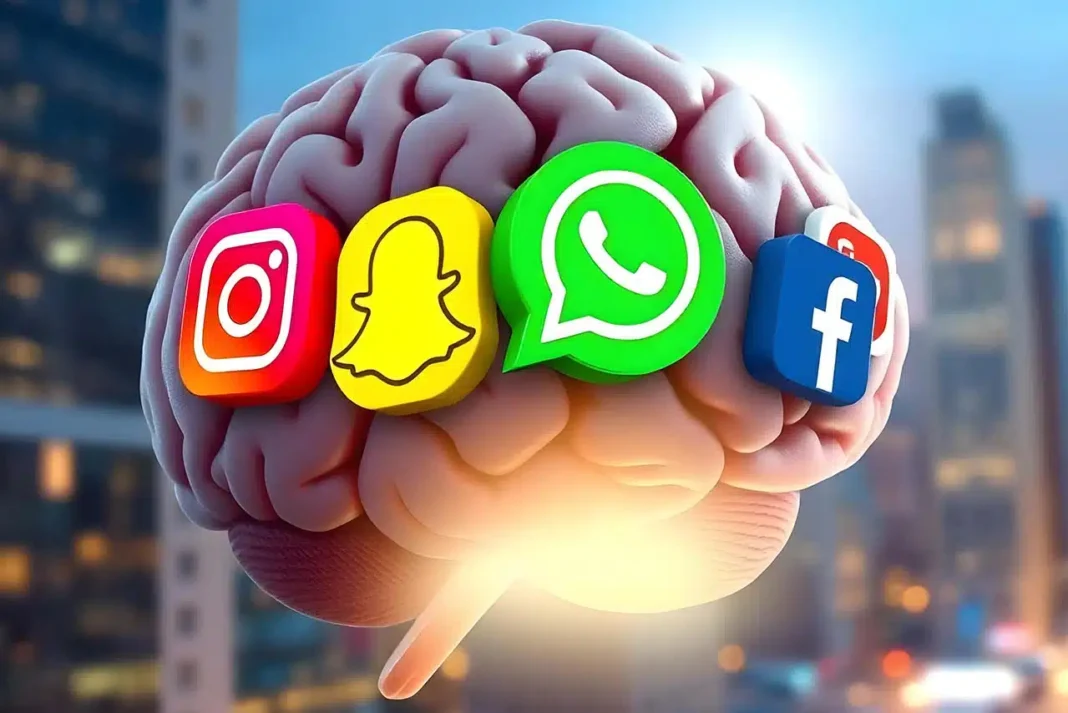In the digital age, smartphone and social media notifications constantly stimulate individuals’ attention systems, triggering both reward anticipation and anxiety. This article examines the phenomenon of compulsive notification control from a neuropsychological and cognitive perspective, offering insights from the perspectives of dopaminergic reward circuits, the attention economy, and behavioral addiction.
Smartphone vibrations, a red alert appearing on the screen, or the sound of a new message—although seemingly innocuous microstimuli in everyday life—strongly activate the brain’s reward system. Fear of missing out (FOMO) and immediate reinforcement processes, in particular, lead individuals to develop hypersensitivity to these stimuli. This is at the heart of what modern psychology calls the “attention economy.”
Neuropsychological Framework: Dopamine and Reward Expectation
Dopamine is the neurotransmitter associated with reward anticipation, rather than the reward itself (Schultz, 2016). Social media and messaging apps stimulate dopaminergic circuits with variable ratio reinforcement schemes. The user knows they may receive a reward (like, message, approval) when a notification arrives, but the timing and value of the reward are unpredictable. This uncertainty increases dopamine release and leads to the maintenance of the behavior.
Constant arousal can suppress the executive functions of the prefrontal cortex by keeping the approach motivation system active. This mechanism makes it difficult for an individual to control their tendency to seek short-term rewards.
Cognitive and Emotional Consequences
-
Distraction and Cognitive Load: Constantly divided attention limits information processing capacity. The “task-switching” literature demonstrates the cognitive costs of frequently switching between tasks (Monsell, 2003).
-
Decision Fatigue: The compulsion to respond to prompts depletes self-regulatory resources (Baumeister et al., 1998).
-
Anxiety and Hyper-Alertness: Ambiguous messages or delayed responses increase arousal in the autonomic nervous system. This effect is more pronounced in individuals with high anxiety sensitivity.
-
Behavioral Addiction-Like Patterns: Repetitive behaviors for prompt control can be characterized by “compulsive use” and the development of tolerance (Turel & Serenko, 2012).
Intervention and Prevention Recommendations
Notification Management
Disabling unnecessary push notifications reduces the frequency of behavioral conditioning and weakens the dopaminergic circuit. Creating separate notification groups for critical applications helps reduce cognitive load.
Time-Based Control
Using a stimulus control approach, allowing notifications only at designated time intervals protects the executive functions of the frontal cortex and reduces decision fatigue.
Mindfulness and Mindfulness-Based Interventions
Mindfulness exercises strengthen the regulatory role of the prefrontal cortex by reducing impulsive reactions. They also increase cognitive flexibility and reduce anxiety levels.
Digital Hygiene Practices
Limiting screen use before sleep supports circadian rhythm maintenance and emotional regulation. Furthermore, “digital detox” practices improve cognitive performance by improving short-term attentional recovery.
Behavioral Training and Self-Regulation
Training that increases users’ awareness of digital interactions is effective for breaking the cycle of compulsive use and improving long-term cognitive resilience.
Conclusion
Compulsive notification control has created a digital ecosystem that exploits the human brain’s natural susceptibility to the dopaminergic reward system. Constant stimulation leads to disruptions in attention processes, depletion of self-regulatory resources, and difficulties with emotional regulation mechanisms.
Restructuring individuals’ relationships with digital stimuli is critical not only for psychological well-being but also for cognitive performance, academic performance, and functional productivity. This process can be supported at the individual level through mindfulness, digital hygiene, and behavioral self-regulation strategies.
Furthermore, at the societal and institutional levels, application designers developing ethical reporting systems and establishing policies to increase user awareness can be effective in reducing the psychological burden brought on by the digital age. Consequently, compulsive notification control is not only an individual behavioral problem; it is also a neuropsychological reflection of modern digital life. Therefore, intervention and prevention strategies should be addressed at both the individual and societal levels.
Source
Baumeister, R. F., Bratslavsky, E., Muraven, M., & Tice, D. M. (1998). Ego depletion: Is the active self a limited resource? Journal of Personality and Social Psychology, 74(5), 1252–1265.
Monsell, S. (2003). Task switching. Trends in Cognitive Sciences, 7(3), 134–140.
Schultz, W. (2016). Dopamine reward prediction-error signalling: A two-component response. Nature Reviews Neuroscience, 17(3), 183–195.
Turel, O., & Serenko, A. (2012). The benefits and dangers of enjoyment with social networking websites. European Journal of Information Systems, 21(5), 512–528.


